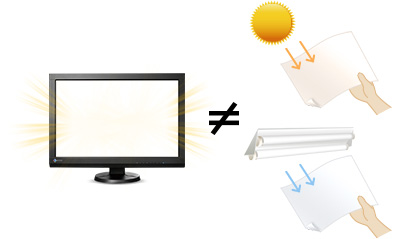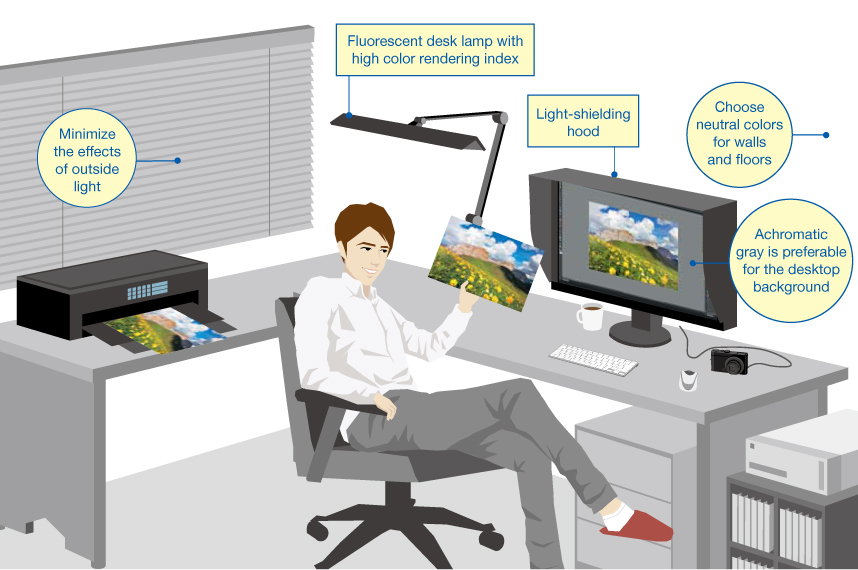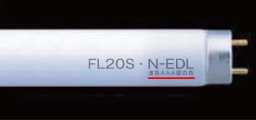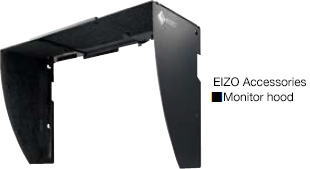The first step to matching begins with ambient lighting
 |
If color matching has been successfully performed between on-screen and printed photos under indoor lighting conditions in the evening, why do they look different under outside light during the daytime? Printed photos reflect the light around them (ambient light) and travel to the human eye where they are recognized as an image. Due to this, when viewing objects in outside light during the day and indoor lighting in the evening, the color of the light changes, so the color of the printed photos (the reflected light) looks different. The problem with this is that monitors do not reflect ambient light; they emit light of their own. Therefore in actuality, even if the ambient lighting changes, the color of the monitor itself will barely change causing colors to appear differently when compared to a printout. |
The first step to making sure that your monitor and prints match is preparing the room in which you install your ColorEdge monitor. The appropriate level of environmental light can be reached with high-CRI (color rendering index) fluorescent light bulbs with a color temperature near 5000 K, the standard in the printing industry.
The following section explains the color of the light and the wavelength of fluorescent light bulbs. When checking your printed material, you should set the color temperature close to the standard 5000 K.
|
|
- N-EDL… AAA Day white color rendering - N-SDL… AA Day white color rendering |
High-CRI fluorescent bulbs with a high average color rendering index (Ra)* are easy to obtain through general electronic retailers with products such as those carried by Panasonic or Toshiba. We recommend choosing a bulb with an Ra value greater than 90.
- Color rendering index refers to a quantitative measure of the ability for a fluorescent light to reproduce the colors that we see in natural light expressed in units of Ra.
Other tips regarding your environment
There are several things to be careful of when creating a suitable environment for color matching. Using curtains or blinds to block outside light will minimize the effects it has on the color of your photos. A ColorEdge monitor hood is also extremely effective in keeping your monitor from being influenced by outside light.
Choose neutral colors for your walls and preferably achromatic gray for your desktop background. If your eyes grow accustomed to seeing reds, greens, blues, or other strong colors that are normally incorporated into photos, you may not be able to clearly judge the colors accurately.

|
|
|
![Once you have prepared the environment, adjust your monitor [Monitor Adjustment]](http://www.eizoglobal.com/library/management/matching/environment/step_02_04.gif)

- You can use the above map to return to any section of this guide.



